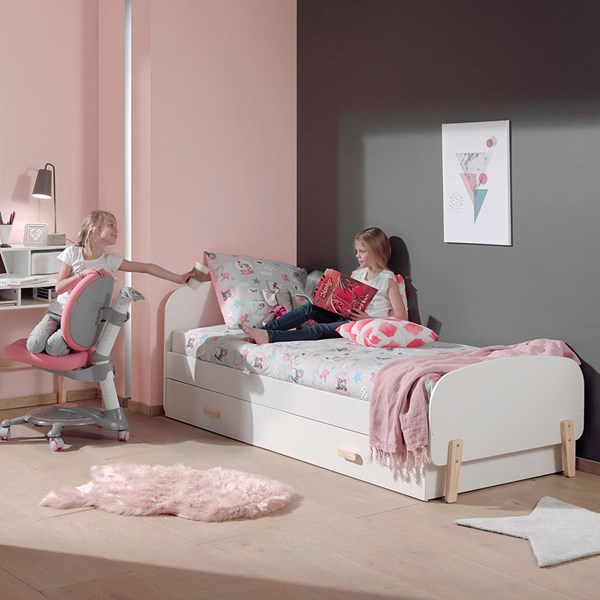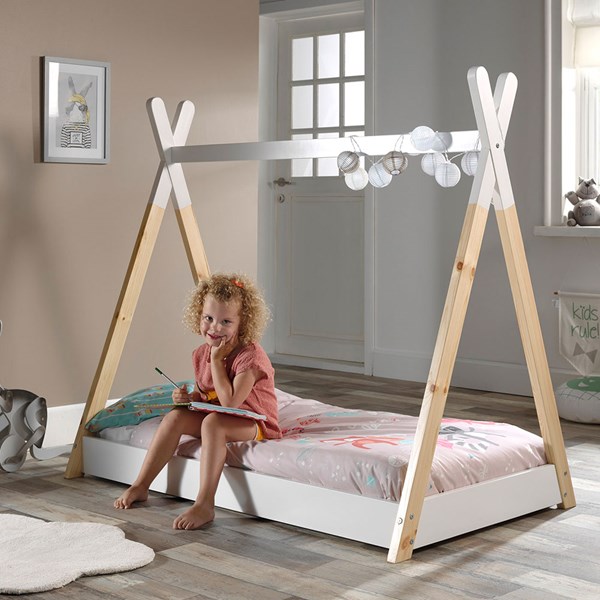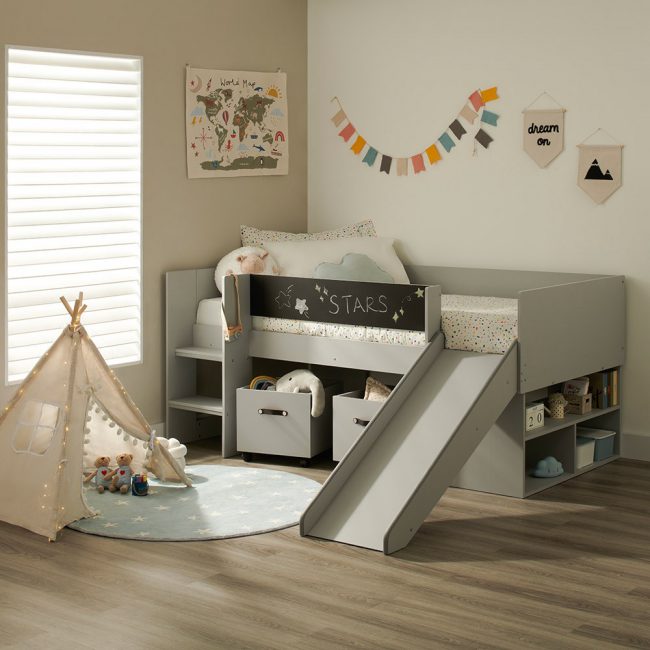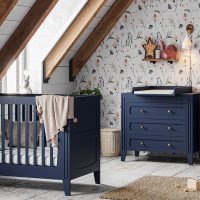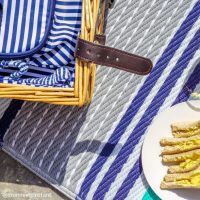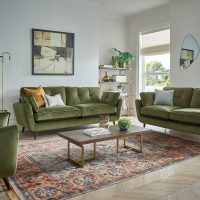How to choose Mattress firmness for a Child
If there was ever a fairytale that was true to life, it would be The Princess and the Pea. Well, I say true, I’m of course talking about one specific part of the story… The part where Princess is thrashing about, unable to sleep because someone decided to leave a pea (yes ‘pea’ with an ‘a’) under the mattress! Now, take out the pea and how many of us princesses (and princes) have still spent the night desperately searching for just the right spot to get some decent sleep? Perhaps the ‘pea’ was just a metaphor for an old lumpy mattress?
As adults, we know when those nights spent tossing and turning inside a deep impression becomes too much to bear and we finally give up the ghost and head online for the best mattress deal after trying one out on the high street first – yes we’re onto you and your crafty little shopping habits! What me, guilty as well? Never!
But, did you know that children require much the same consideration as adults when it comes to mattress firmness? And kids mattresses may not even last as long as adult mattresses (which is between 7-10 years btw). Crazy, I know, but those little growing bodies need just as much, if not more, support as us big bodies do. With this in mind, I have put my musing to work and created a useful guide to choosing the correct firmness when it comes to mattresses for your little ones.
Sleep requirements for Children
According to The Sleep Council children should have between 10 and 12 hours of sleep per night. It goes without saying that those little bundles of energy need all those precious hours to recharge and let their brains and bodies develop as they should. To aid in slumber time it’s important that a child’s bed frame and mattress provide the following:
- Support to promote good posture
- Durability to take on the changing size of a child
- The support to aid in good sleep hygiene
Firmness by Mattress Type
There are many types of mattresses available for children. Below are the most common mattress types and the firmness properties of each:
Open Coil Mattress
- Best for support
- Worst for response to shape
The open coil mattress (also referred to as a standard sprung) is one of the firmest mattresses around. An open coil features a series of springs, connected to each other and encased in a thick filling. Open coils usually have a few hundred of these interlocking coils to provide support and durability. However, as the design of an open coil mattress is slightly “rigid” the mattress may not respond accordingly to changes in a child’s body size as they grow.
Pocket Sprung Mattress
- Best for firmness durability
- Worst for price
The pocket sprung is not unlike the open coil mattress and provides long-lasting firmness. The key difference between the two is that a pocket sprung mattress is made up of not hundreds but thousands of metal springs encased in pillars of fabric. This means, like for like, a pocket sprung mattress is more likely to retain firmness over its lifetime. The drawable to this durable mattress is that it is likely to cost more than a standard sprung model. That being said, the durability of a pocket sprung may be well worth the cost.
Memory Foam Mattress
- Best for shape responsiveness
- Worst for air flow
A memory foam mattress is extremely responsive to body shape and will literally mold to a child’s body. This will naturally reduce the amount a child will toss and turn. Memory foam is naturally hypogenic and great for allergy sufferers. It is also known to be very durable. The downside of a memory foam mattress is temperature regulation. Memory foam is heat retaining and because small children aren’t great for regulating their own body temperature, a memory foam mattress may not be suitable for very small children.
Reflex Foam Mattress
- Best for moveability
- Worst for support
A reflex foam mattress is similar to a memory foam mattress but a cheaper version. A reflex foam mattress typically offers a medium firmness and therefore lacks the support of memory foam. Reflex is cheaper but again will retain heat which is a consideration when buying for small children.
Latex Mattress
- Best for support and firmness durability
- Worst for price
Latex mattresses are great for small children and retain their firmness perfectly. They are supportive, durable, naturally hypoallergenic and eco-friendly. As a wipe clean mattress, they get a two thumbs up salute from most parents. The drawback to a latex mattress lies firmly in the price. They are typically more expensive than most other mattresses.
Mattress considerations by age
Baby
When buying a mattress for a baby you will typically need a crib or cotbed mattress. The size of a crib or cot can vary so it’s always best to check the crib/cot dimensions before you start to browse. A cot mattress should have the following four features:
- Firmness
- Correct size
- Waterproof
- Washable
A cot mattress needs to be firm in order to support the baby’s spine and neck. A firm mattress allows for breathability too and needs to circulate air correctly. We recommend a Natural Twist Cot Mattress for firmness and support. It’s important to note that all cot mattresses also needs to adhere to the correct European Safety Regulations.
Toddler
A toddler mattress should also be firm to aid in the development of a toddler’s body, although comfort can also come in to play here as the selection of toddler mattresses extends past the basic needs of a cot bed mattress. A Kids Natural Junior Mattress is a great example of firmness and comfort.
Young Children
Young children get to branch out when it comes to mattresses and comfort preferences can be brought in. Firmness and support should still be considered but young children can afford the choice between the different types of mattresses. A young child will usually need a standard single mattress to fit their bed but again it’s always worth checking the dimensions of your child’s bed before buying. The Maxitex Pocket Sprung Mattress is a great mattress for young children and one we recommend.
Teenagers
Teens need height as a key consideration when buying a mattress and you may well branch out into a small double bed. As teens can regulate temperature and favour comfort over all other, memory foam and reflex foam are popular choices for teens.
Need more support?
Hopefully, my guide to selecting the correct mattress for your little one has helped. However, if you’re still a little unsure, you can contact me or my lovely team for more advice. Simply call us on +44 (0) 1305 231231 Mon-Fri 9-6pm or email nathalie@cuckooland.com or customerservice@cuckooland.com and we will be happy to help clear up any further questions you might have.
